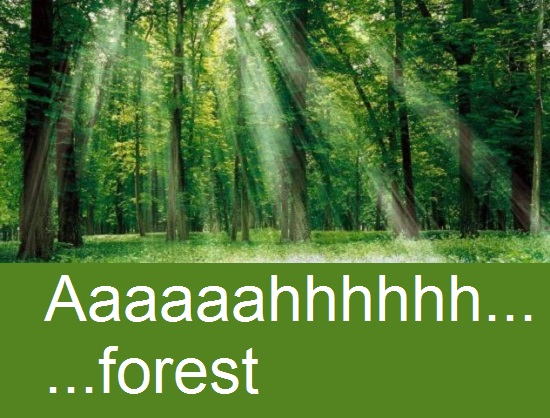
New forests are rising on old farm fields in Mapleton Township in an effort to improve water quality in streams feeding Conestogo Lake reservoir. About 70,000 trees are being planted this year and next on two parcels of land totalling 40 hectares (100 acres) on the north side of the reservoir.
The GRCA is planting a variety of species that are native to the area, including spruce, tamarack, white pine, bur oak, silver maple and cottonwood. In addition to the new forests, the GRCA will also do some reshaping of the landscape to create some seasonal wetlands that will also help improve water quality and provide additional habitat.
As the trees grow in coming years, the areas will quickly become home to a variety of animals, such as deer and wild turkeys. Later, as the forests mature, it’s expected that several bird species including scarlet tanagers, ovenbirds and great horned owls will take up residence. A 12 hectare parcel near Wellington Road 10 and Concession Road Five has been planted this year. The second parcel of 28 hectares is near Concession Road 5 and Sideroad 15. About 18 hectares has been planted this year and the rest will be planted in 2015. The land was acquired by the GRCA when it built the reservoir in the 1950s. It has been leased to farmers since then.
These two parcels of land were prone to erosion which sent a lot of sediment down the streams into the reservoir, explained Ron Wu-Winter, watershed forester with the GRCA. In addition, the sediment also carried nutrients – phosphorous and nitrates – which are found in manure and commercial fertilizers. The nutrients would spur algae and plant growth in the reservoir, resulting in lower water quality.
The northwestern part of the Grand River watershed contains some of the best farmland in Ontario. As a result, the forest cover is some of the lowest in the watershed. Forest cover is estimated at 15 per cent or less. A healthy watershed should have forest cover of about 30 per cent. Trees help raise water quality in several ways. They soak up nutrients in the soil, so reduce the volume that runs off the surface into a watercourse. Trees along a stream shade it, keeping it cooler in summer which is good for some coldwater fish species.
The total cost of the project is about $150,000. About $50,000 was contributed by the Grand River Conservation Foundation. It is also supported by the Trees Ontario Foundation which is contributing $65,000. For the Silo, Dave Schultz.
Tree Facts
* Across the entire watershed, the GRCA will plant about 400,000 trees this year, including 95,000 on its own land and 300,000 in partnership with private land owners.
* The GRCA operates a nursery near Burford, in Brant County, where it grows more than 150,000 trees a years from 60 different species.
* Since it was created in 1934, the GRCA has planted more than 27 million trees on both private land and its own land.
* The Grand River watershed was 85 per cent forest 200 years ago. However, tree cover dropped to just five per cent by 1900 as land was cleared for farming and urban areas. Today, the tree cover has rebounded to about 19 per cent. Environment Canada suggests a healthy watershed needs a tree cover of about 30 per cent.
* To learn more about the GRCA’s tree planting program, go to the Tree Planting section of the GRCA website. The GRCA helps private landowners develop planting plans, plant the trees and find grants to offset costs.
Supplemental- Turning farm land back into forest- http://www.udel.edu/PR/Messenger/04/03/PTturning.html
Why I support farmers working to protect the environment
Ontario’s Government is helping more farmers take action in Haldimand-Norfolk to make their operations more environmentally sustainable and to boost water quality in the Lake Erie and Lake St. Clair watershed.
I commended Minister of Agriculture, Food and Rural Affairs, Ernie Hardeman, on a recent announcement of increased cost-share funding for farmers to help complete more than 300 on-farm projects to reduce phosphorus entering waterways connected to Lake Erie. The improvements come through the Lake Erie Agriculture Demonstrating Sustainability (LEADS) initiative, under the Canadian Agricultural Partnership.
Included among these are 19 projects in Haldimand and Norfolk Counties for the 2019-20 year. These local projects saw an investment under the Partnership of $177,491.40.
Some examples of LEADS projects include:
Planting over-wintering cover crops to improve soil health and reduce soil erosion losses;
Planting vegetation and trees to provide a buffer between agricultural operations and waterways; and
Modifying equipment to improve management of agricultural nutrients and to reduce soil compaction.
Phosphorous is a serious issue in Lake Erie and contributes to algal blooms in the west end, we all need to pitch in on both sides of the border to tackle this problem. This funding is a step in that direction.
“Our farmers always have been careful stewards of the land and our government is pleased to support them in their actions to protect what matters most, such as water quality in the Lake Erie watershed,” said Ernie Hardeman, Ontario Minister of Agriculture, Food and Rural Affairs. “Our government is committed to helping more farmers make changes through LEADS that will make their operations even more environmentally sustainable.”
LEADS programming under the Partnership builds on the substantial leadership that Ontario farmers in the Lake Erie watershed have demonstrated in taking action to improve local soil health and water quality.
To date, both the federal and provincial governments have committed cost-share support to more than 1,150 projects through the Partnership to help eligible Ontario farmers, processors, businesses and sector organizations innovate and grow.
For more information, contact me, MPP Toby Barrett at 519-428-0446
Please mention The Silo when contacting.